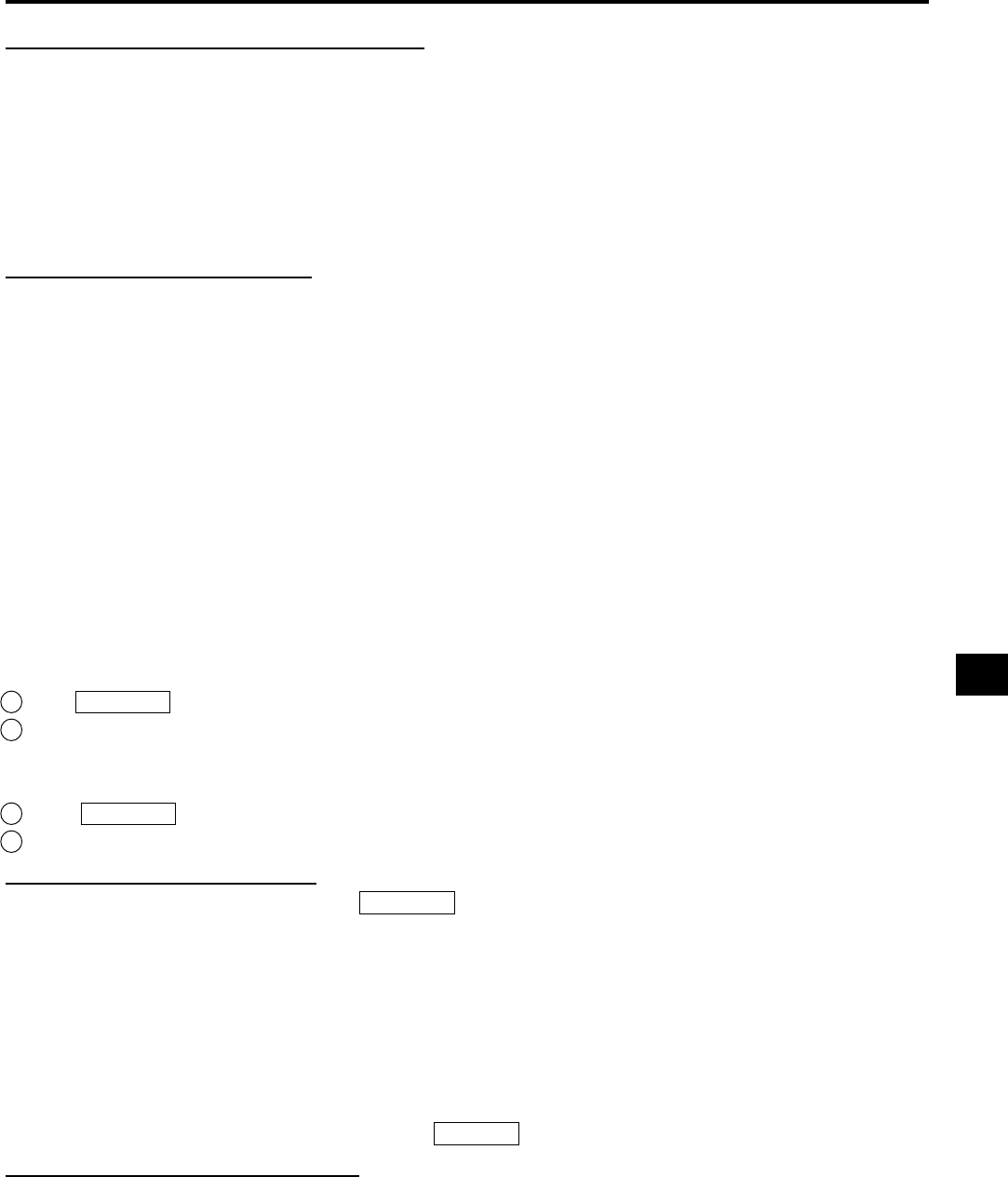
87
Communications Section
5. Communication Method for CA-100 Compatible (RS-232C)
1. Communication parameter setting (RS-232C)
Set the same communications settings as those on the instrument to the computer.
Baud rate: 38400, 19200, 9600 (factory setting), 4800, 2400, 1200, 600, 300, BPS
Start bit: 1 bit
Character length: 7 bits (ASCII code)
Parity check: EVEN
Stop bit: 2 bits
2. Inputting Commands (RS-232C)
The commands listed starting on page 90 to 93 can be input to the CA-100Plus in ASCII code to control the
operation of the CA-100Plus.
<About Delimiter>
● Any of three delimiter codes can be used after a command (when inputting single commands) or at the end of a
command string (when inputting multiple commands connected by “&”):
<CR> (carriage return), <LF> (line feed), or the combination of <CR> and <LF>.
● When outputting data to the PC from the instrument, “CR” (carriage return) will be attached to the data as a
delimiter.
<Turning ON/OFF Remote Mode>
Communication with the PC is possible via RS-232C when the instrument is in remote mode.
● To turn ON remote mode
To set CA-100Plus to remote-control mode (REMOTE LED will light), do either of the following:
1 Press REMOTE key, or
2 Input the command “F1” from the computer.
● To turn OFF remote mode
To cancel remote-control mode, do either of the following:
1 Press REMOTE key again, or
2 Input the command “F0” from the computer.
● Notes on Remote Mode ON/OFF
In remote mode, no keys other than the REMOTE key are effective. To operate keys, make sure that remote
mode is turned OFF.
<Operating the Instrument using Commands>
● Commands shown in the input command table (page 90 to 93) can be input to this instrument to operate the
instrument from the PC.
● If you want to input more than two commands consecutively, separate them with “&”. Up to 250 characters
(including delimiters and “&”) can be input consecutively.
Example: M0 & S3 & C03 & N [MINOLTA] delimiter
● Notes on Operation using Commands
When the instrument receives a command (or a group of commands separated with “&”), it will not accept any
other commands until processing of that command (or group of commands) is completed.


















